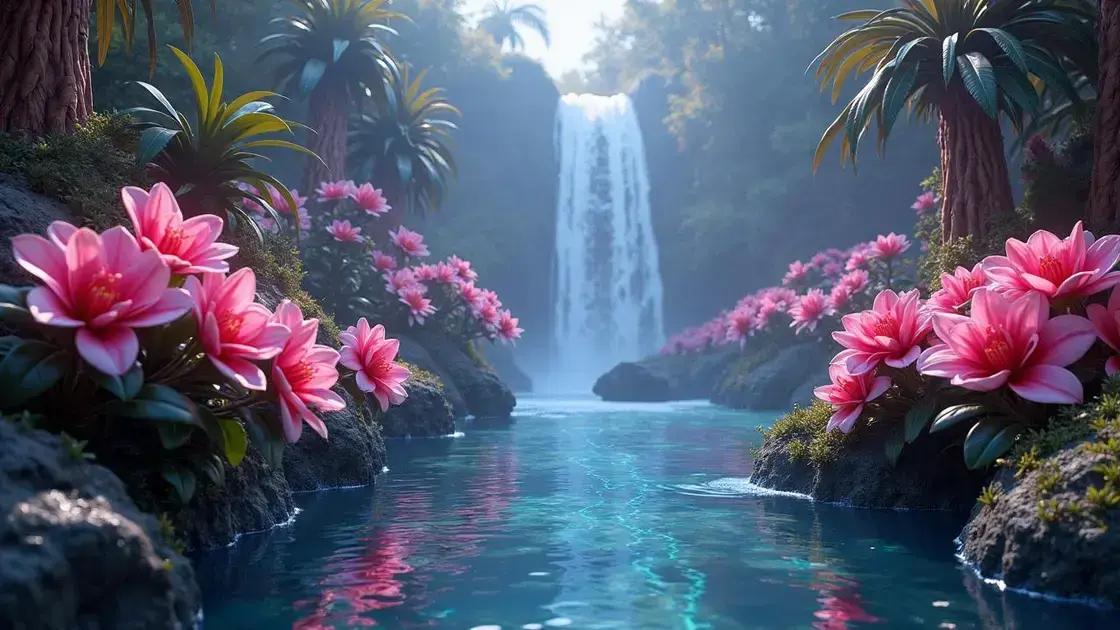How to Care Gardenia Plant Like a Pro: 7 Essential Tips for Success
How to care gardenia plant is a question many gardening enthusiasts ask, eager to nurture these fragrant beauties. Gardenias are known for their stunning white flowers and distinctive scent, captivating any space they occupy. However, caring for them can be challenging without the right know-how. This guide dives deep into essential gardenia care tips that will help your plants thrive.
Table of Contents
ToggleUnderstanding gardenia light requirements
Understanding gardenia light requirements is crucial for anyone looking to care for gardenia plants successfully. These flowering beauties thrive best in specific lighting conditions that can significantly affect their health and blooming potential. Without proper light exposure, your gardenia may exhibit stunted growth or fail to produce those fragrant, beautiful flowers.
Optimal light conditions for gardenias
- Bright, indirect light: Gardenias require plenty of bright, indirect sunlight to flourish.
- Avoid direct sunlight: Too much direct sunlight can burn the leaves, leading to crispy edges.
- Ideal locations: Place gardenias near east or west-facing windows to receive the filtered light they love.
Signs of inadequate lighting
If your gardenia is not receiving enough light, you may notice:
- Leggy growth: Plants stretch towards the light source, causing elongated stems.
- Pale leaves: Lack of photosynthesis can result in yellowing foliage.
- Reduced blooming: Fewer flowers or no blooms at all can occur.
Adjusting light levels for your gardenia
Transitioning your gardenia to an appropriate light setting can improve its health:
- Gradually increase light exposure to prevent shock.
- Use sheer curtains if placing near a bright window to filter harsh rays.
- Rotate the plant regularly to ensure even light distribution on all sides.
Indoor care for gardenias
For those interested in exploring indoor gardening techniques, understanding gardenia light requirements is just one aspect of successful indoor plant care.
Comparative table of light sources
| Light Source | Pros | Cons |
|---|---|---|
| Natural sunlight | Promotes robust growth | Can be too intense without proper diffusing |
| Fluorescent bulbs | Great for starting seedlings and supplementing light | Needs to be close to the plant for effectiveness |
| LED grow lights | Energy-efficient and long-lasting | Initial setup cost can be high |
The right light conditions can make all the difference when learning how to care for gardenia plants. Experiment with different locations and lighting setups to find the ideal environment for your gardenia to thrive.
Watering tips for healthy gardenia growth

Watering tips for healthy gardenia growth are essential for any gardenia enthusiast looking to promote robust plant health. Proper watering techniques are integral to encouraging lush foliage and vibrant blooms. An understanding of how much and how often to water your gardenia can significantly affect its overall vitality.
Key watering methods for gardenias
- Deep watering: Ensure the soil is thoroughly moistened to promote deep root growth.
- Consistent schedule: Water your gardenia plants regularly, especially during the growing season.
- Check soil moisture: Use your finger to test the top inch of soil; if it feels dry, it’s time to water.
Signs of overwatering or underwatering
Identifying the right watering needs requires attention to your gardenia’s health:
- Overwatering symptoms include yellowing leaves and root rot.
- Underwatering can lead to wilting leaves and poor blooming.
Watering frequency based on seasons
Adjust your watering schedule according to the changing seasons:
- Spring and summer: Water once a week, ensuring the soil remains moist but not soggy.
- Fall: Reduce watering as growth slows down, typically every 10-14 days.
- Winter: Water sparingly, as the gardenia is dormant; allow the top layer of soil to dry out.
Techniques for improved watering
For those interested in exploring indoor gardening techniques, here are some advanced watering methods:
- Drip irrigation: Provides a slow, consistent water supply, ideal for delicate gardenias.
- Self-watering pots: Help regulate moisture levels for consistent hydration.
Watering schedule overview
| Season | Watering Frequency | Soil Condition |
|---|---|---|
| Spring | Weekly | Moist but not soggy |
| Summer | Weekly | Moist but not soggy |
| Fall | 10-14 days | Dry top inch |
| Winter | Sparingly | Dry top layer |
Incorporating these watering tips into your gardenia care routine will help ensure they remain healthy and flourish.
Common gardenia problems and solutions
Common gardenia problems and solutions are essential knowledge for every gardenia owner. Identifying issues promptly can ensure that your plants remain healthy and vibrant. This guide explores frequent challenges faced by gardenia enthusiasts and practical solutions to overcome them.
Pest infestations affecting gardenias
Common pests that can invade gardenia plants include:
- Aphids: Small, green insects that suck sap from leaves.
- Mealybugs: White, cottony pests that can weaken plant health.
- Spider mites: Tiny, web-spinning creatures that thrive in dry conditions.
Identifying and treating pest problems
If you suspect pest issues, consider these steps:
- Inspect leaves regularly for signs of pests.
- Apply insecticidal soap or neem oil as a natural remedy.
- Keep humidity levels up to deter spider mites.
Common gardenia diseases
Gardenias are susceptible to several diseases that can hinder their growth:
- Leaf Spot: Characterized by dark spots on leaves, typically caused by overwatering.
- Root Rot: Results from soggy soil conditions, leading to dying plants.
- Powdery Mildew: White fungal growth can appear on leaves in high humidity.
Effective disease management strategies
To safeguard your gardenia’s health:
- Ensure proper drainage to prevent root rot.
- Water at the base of the plant to keep leaves dry.
- Use fungicides at the first sign of powdery mildew.
Environmental factors impacting gardenia health
Environmental conditions can also lead to gardenia problems:
- Low light: Insufficient light can inhibit blooming.
- Improper watering: Both over and under-watering can stress your plant.
- Temperature fluctuations: Extreme heat or cold can affect growth.
Helpful tips for maintaining gardenias
For those interested in exploring indoor gardening techniques, here are a few practices to keep your gardenias flourishing:
- Regularly monitor environmental conditions, such as temperature and humidity.
- Adjust watering habits according to the season.
- Use high-quality potting soil to provide necessary nutrients.
By learning to recognize these common gardenia problems and implementing effective solutions, you can enjoy the beauty and fragrance of healthy gardenia plants.
In conclusion
Caring for gardenia plants can be a rewarding experience if you understand their specific needs. By properly addressing light requirements, mastering effective watering techniques, and identifying common problems, you can ensure your gardenias thrive in any setting. Remember that attention to detail and consistency are key to fostering healthy growth and beautiful blooms. For more insight into creating the ideal environment for your plants, check out these tips on enhancing your indoor garden.

